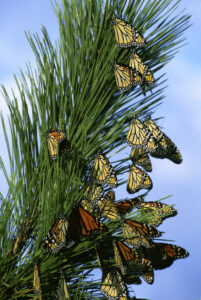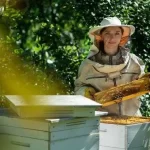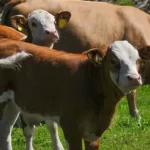The Plight of the Monarchs: A Declining Dance in Mexico’s Winter
In the heart of Mexico, a story unfolds each winter, one of beauty, resilience, and now, concern. The monarch butterflies, known for their epic annual migration, have painted the Mexican forests with their vibrant orange and black wings for centuries. This natural spectacle, however, is facing a critical challenge. Recent observations reveal a startling reality: the number of monarchs wintering in Mexico has plummeted to the second-lowest level ever recorded. The 2023 to 2024 overwintering season marks a significant downturn, with the butterflies’ presence reduced by an alarming 59% from the previous year. This decline is not just a number; it signifies a dire warning about the health of our planet and the intricate ecosystems that inhabit it.
Behind this dramatic decrease lie the intertwined threats of climate change, habitat destruction, and pesticide use, each contributing to the monarchs’ fading numbers. Despite occasional glimmers of hope, such as the observed increase in the 2021 to 2022 season, the overall trend is one of decline. This alarming drop calls for a deeper exploration into the reasons behind the monarchs’ struggle, the implications for our environment, and most importantly, the actions we can take to reverse this downward spiral. Join us as we delve into the captivating yet concerning world of the monarch butterflies, unraveling the layers of challenges they face and the steps we can take to ensure their dance continues for generations to come.
A Journey Under Threat: The Monarchs’ Perilous Path
The majestic journey of the monarch butterfly, spanning thousands of miles from the cooler climes of Canada and the United States to the warmer forests of Mexico, is one of nature’s most remarkable phenomena. Each year, as autumn hues give way to winter’s chill, these resilient creatures embark on their migration, guided by an innate compass passed down through generations. This pilgrimage, however, is fraught with peril, exacerbated by an ever-changing climate and human encroachment on their natural habitats. The recent significant drop in their numbers is a poignant reminder of the fragility of this annual migration and the delicate balance of ecosystems that support it.
Climate change, with its far-reaching impacts, stands as a formidable adversary to the monarchs’ survival. Rising temperatures, erratic weather patterns, and prolonged droughts disrupt the delicate synchrony between the butterflies’ life cycle and the availability of their breeding and feeding grounds. These conditions not only make their long journey more arduous but also threaten the very existence of the milkweed plants upon which they lay their eggs and their larvae feed. Without these vital resources, the cycle of life for monarchs is broken, leading to a decrease in their population.
Moreover, the widespread use of pesticides in agriculture adds another layer of threat to these vulnerable migrants. Chemicals designed to protect crops often have unintended consequences for the monarchs, poisoning their food sources and decimating their populations. The loss of habitat, both from agricultural expansion and urban development, further compounds the challenges faced by these butterflies. As forests shrink and meadows disappear, the monarchs lose not only their winter sanctuaries but also the way stations critical for their survival during migration. This complex web of challenges underscores the urgency of concerted conservation efforts to safeguard the future of the monarch butterfly migration.
The Environmental Challenges: Unraveling the Monarchs’ Decline
As the monarchs traverse across continents, their journey is a testament to resilience in the face of adversity. Yet, this resilience is being tested as never before. The decline in their wintering numbers in Mexico is a stark indicator of the environmental challenges they face. Among these, habitat loss stands out as a primary concern. Forests that once offered a haven for these creatures to overwinter are now diminishing. This loss is twofold: the monarchs lose their wintering grounds in Mexico and their breeding and feeding habitats along their migratory route. Urban development, agricultural expansion, and illegal logging are shrinking these critical spaces, leaving the monarchs with fewer places to rest, breed, and feed.
The implications of pesticide use further exacerbate the monarchs’ plight. Pesticides, particularly those used in industrial agriculture, not only eliminate the milkweed plants essential for monarch larvae but also pose a direct threat to the butterflies themselves. Milkweed is the only plant on which monarchs lay their eggs and their caterpillars feed, making its availability crucial to their survival. The widespread application of herbicides and insecticides has led to a significant decrease in milkweed populations across North America, directly impacting monarch reproduction and survival rates.
Climate change adds another layer of complexity to the monarchs’ survival saga. The altering climates affect migratory patterns, breeding cycles, and the availability of food sources. Unpredictable weather events, such as late frosts or extreme heat, can kill millions of monarchs en route to their destinations. Furthermore, drought conditions reduce the availability of nectar-rich flowers, leaving monarchs without the energy reserves needed to complete their migration. These intertwined threats underscore the fragile balance of the monarchs’ ecosystem and the urgent need for actions to mitigate these impacts and protect the future of this extraordinary migration.













